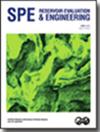Proved Reserves Revisions: How Reliable Are They?
IF 1.5
4区 工程技术
Q3 ENERGY & FUELS
引用次数: 0
Abstract
Summary This paper incorporates the findings of our previous publication (Morales and Lee 2022) and identifies, isolates, and quantifies elements in the annually disclosed proved reserves revisions that should not be considered technical or economic revisions. This has resulted in significantly different technical and economic revisions compared to those simplistically and directly derived using a common interpretation of the Financial Accounting Standards Board (FASB) Topic 932-235-50-5 (a) definition. We have assessed the reliability and comparability of the updated technical revisions when used to judge the reasonable certainty of the underlying proved reserves. We have carried out the analysis separating the proved reserves into developed and undeveloped. To derive a realistic data set to generate the updated technical and economic revisions, we reviewed more than 1,000 annual reports (10K and 20F Forms) and more than 600 comment letters from 141 companies filing annual reports to the Securities and Exchange Commission (SEC) during the period 2010–2020, extracting the information related to annual reserves changes and explicitly focusing on the disclosed revisions of previous estimates (RPE). We present evidence showing that the approach followed is robust and more reliable than the simple approach where technical revisions are estimated by simply subtracting the disclosed revisions due to price effects from the disclosed revisions in annual reports. The root causes for the significant differences between the simplistic approach and the one presented in this paper are mainly due to (1) including annual reserves changes due to nontechnical or economic factors as technical revisions, (2) using different interpretations of SEC and FASB regulations, and (3) not providing critical disaggregation information needed to estimate technical, economic, or other types of revisions correctly. Without proper consideration of these issues, the derived technical and economic revisions from disclosed data can be significantly distorted, affecting any conclusions derived. The annual average changes in technical revisions during a representative period, if correctly estimated, can provide an indication of both overstated and understated certainty of proved reserves estimates, which can impact a company’s relative valuation, asset impairment, internal depreciation, profit/loss, standardized measure, unit development costs, and other indicators based on proved reserves, making the reliability of the technical revisions and their actual upward or downward movements of paramount importance. We also highlight the significant different root causes driving the major differences between developed and undeveloped reserves in their annual technical revisions. The results indicate that for some companies that provide most of the information required for proper analysis, the certainty level of their disclosed developed and undeveloped proved reserves points toward an apparent overestimation of historically disclosed proved reserves. Our analysis shows the dubious quality and lack of reliability and comparability of the disclosed proved reserves revisions and highlights the limited value of existing guidance and current practices. We provide evidence that calls for FASB and SEC to provide complementary guidance in critical areas that currently limit the value, reliability, and comparability of the proved reserves revisions disclosed.探明储量修正:有多可靠?
本文结合了我们之前的出版物(Morales and Lee 2022)的研究结果,并识别、分离和量化了年度披露的探明储量修订中不应被视为技术或经济修订的元素。与使用财务会计准则委员会(FASB)主题932-235-50-5 (a)定义的共同解释简单而直接地推导出来的那些相比,这导致了显着不同的技术和经济修订。我们已经评估了更新的技术修订版在判断潜在探明储量的合理确定性时的可靠性和可比性。我们将探明储量分为已开发储量和未开发储量进行了分析。为了获得一个真实的数据集来生成最新的技术和经济修订,我们审查了2010-2020年期间向美国证券交易委员会(SEC)提交年度报告的141家公司的1000多份年度报告(10K和20F表格)和600多封评论信,提取了与年度储备变化相关的信息,并明确关注先前估计(RPE)的披露修订。我们提供的证据表明,所采用的方法比简单的方法更稳健,更可靠,其中通过简单地从年度报告中披露的修订中减去由于价格影响而披露的修订来估计技术修订。简化方法与本文中提出的方法之间存在显著差异的根本原因主要是(1)将非技术或经济因素导致的年度准备金变化作为技术修订,(2)使用对SEC和FASB法规的不同解释,以及(3)没有提供正确估计技术、经济或其他类型修订所需的关键分解信息。如果不适当考虑这些问题,从公开数据中得出的技术和经济修订可能会严重扭曲,从而影响得出的任何结论。如果正确估计,代表性期间技术修订的年平均变化可以提供高估和低估已探明储量估计确定性的指示,这可能影响公司的相对估值、资产减值、内部折旧、损益、标准化计量、单位开发成本和基于已探明储量的其他指标。使技术修订的可靠性及其实际向上或向下的运动至关重要。我们还在其年度技术修订中强调了导致已开发和未开发储量之间重大差异的显著不同的根本原因。结果表明,对于一些提供了适当分析所需的大部分信息的公司,其披露的已开发和未开发探明储量的确定性水平表明,其历史披露的探明储量明显高估。我们的分析表明,已披露的探明储量修订的质量可疑,缺乏可靠性和可比性,并突出了现有指导和当前实践的有限价值。我们提供的证据呼吁FASB和SEC在目前限制所披露的探明储量修订的价值、可靠性和可比性的关键领域提供补充指导。
本文章由计算机程序翻译,如有差异,请以英文原文为准。
求助全文
约1分钟内获得全文
求助全文
来源期刊
CiteScore
5.30
自引率
0.00%
发文量
68
审稿时长
12 months
期刊介绍:
Covers the application of a wide range of topics, including reservoir characterization, geology and geophysics, core analysis, well logging, well testing, reservoir management, enhanced oil recovery, fluid mechanics, performance prediction, reservoir simulation, digital energy, uncertainty/risk assessment, information management, resource and reserve evaluation, portfolio/asset management, project valuation, and petroleum economics.

 求助内容:
求助内容: 应助结果提醒方式:
应助结果提醒方式:


